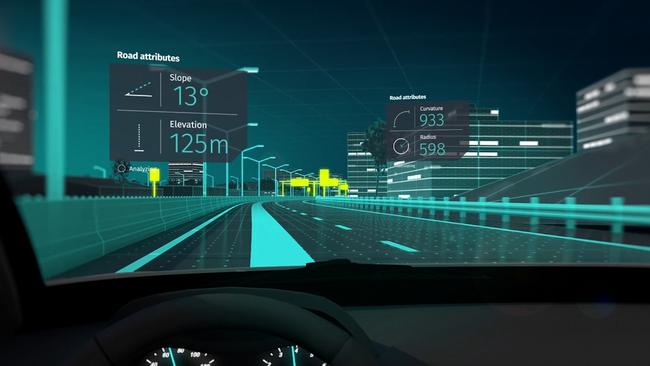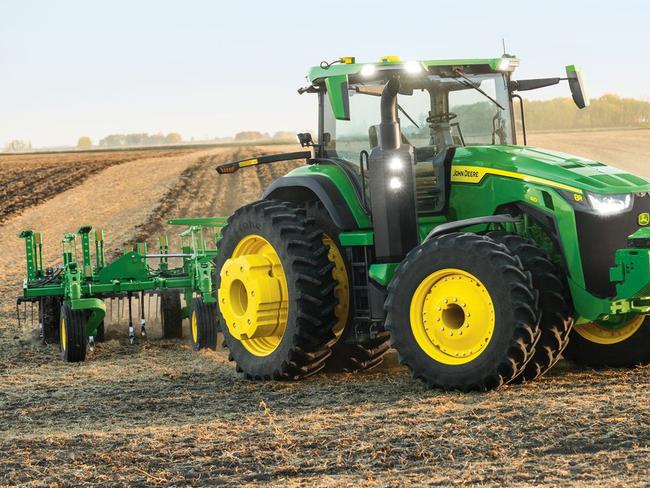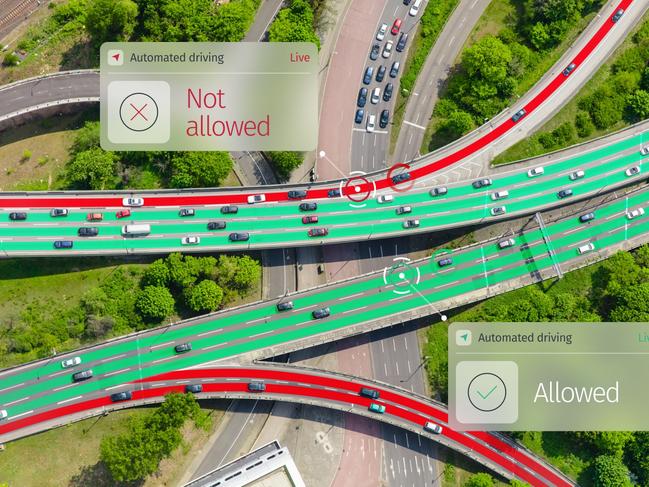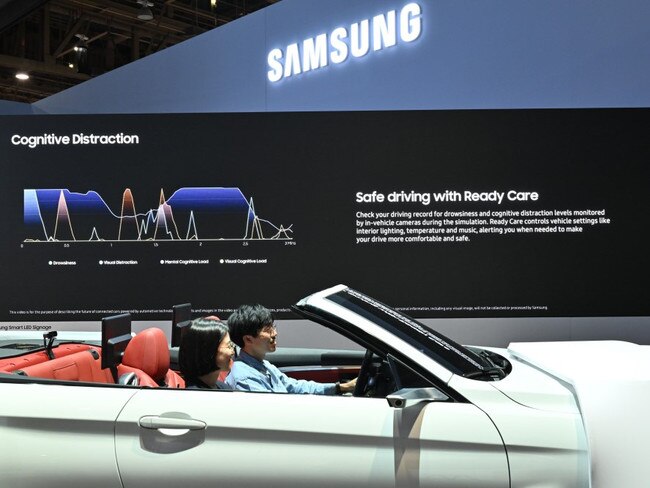CES a reality check for our autonomous driving future
Driverless tractors and cars were on show in Las Vegas but the truth is that these technologies still may be a decade away, despite Elon Musk’s best intentions.

The annual CES event in Las Vegas has traditionally been about major brands announcing their latest home entertainment products for the year. As technology has expanded into more areas of the home and into vehicles, CES is now a very different event. In 2023, a large portion of the show is dedicated to vehicles, robots and autonomous technology. While eccentric billionaires like Elon Musk will purport that self-driving cars are minutes away, the practicality of it is far from this and at CES, we investigated the progress to autonomy.
Across Las Vegas last week we saw various car technology brands demonstrating vehicles on the road where the driver is largely hands off. The car with retrofitted sensors and other hardware will follow a path of navigation and do a loop. This controlled environment is manageable and the driver is always ready to take over when necessary, especially as external people, cars and objects interfere with the demonstration pathway.
In a large press conference from John Deere, we witnessed the progress of farm tech and how tractors are being employed to plough fields. This is very possible through the use of sensors, GPS and a lack of variables. A large field is less likely to have any obstructions or surprises and purely requires the tractor to drive a defined path and stop when it has completed it. This allows the farmer to work on other things and should increase efficiency in the agricultural sector.

So with both of these controlled scenarios understood, the question of when we will truly be able to drive on Australian roads while reading the newspaper would be possible. Speaking with HERE Technologies, we heard a very different story to what you may be led to believe when a car can be sold with “Autopilot”.
Edzard Overbeek, CEO of HERE Technologies, tells The Australian that while there was an aggressive push to move to autonomy, the pandemic allowed everyone to pause and consider that while the technology may be in a fairly ready state, external factors such as regulation, the environment the cars operate in and the transport of data force us to normalise our view and take a more realistic approach. With that said, Edzard was clear that while total autonomy is some time away, cities will begin creating autonomous zones. These zones would be a road or area where the mapping and environment are highly detailed and recorded so that the car is fully aware of its surroundings but that the car and its surroundings can communicate to one another.
HERE Technologies builds the software that lives inside the majority of vehicles today powering navigation. As a provider to the biggest car brands on the market they are working hand in glove to deliver the mapping and data to enable autonomous driving. As a car brand develops a vehicle with the combination of sensors and HERE Technologies software, it could be ready to experience self driving. The challenge for HERE Technologies is not just in the vehicle but capturing and harnessing the data or the car but also the environment. HERE Technologies described that over 35 million vehicles currently share data back to their UniMap software platform.

Over 400,000km of travel data is consumed each day on their platform. This data can tell the platform about the changes to road conditions such as potholes, road works, the weather and car accidents. This data, when rapidly shared back to the platform and subsequently to all vehicles means that better routing and navigation can take place. As a car would need to think for itself, these data elements will continuously inform the vehicle of what is ahead and how to change accordingly. An example is an airbag deployment. This action in a vehicle would be recorded and immediately shared on the platform, within less than 12 seconds from the action occurring, all surrounding vehicles would be aware and able to avoid the area. If a vehicle triggers windscreen wipers, this is not a direct indication of rain, but if more than 10 vehicles in an area do so, this would indicate it’s raining and this data would be available immediately to adjust for wet conditions.
From a mapping perspective, they are no longer flat and no longer static. Onboard cameras from a vehicle will continue to update the mapping systems to indicate a barricade, lamp post or variations in the road angles. Any changes to the environment would be shared on the platform and only one car would ever go through a pothole, as once it is discovered, all cars beyond that would know about it.
These factors reflect how data will be shared between cars, things and objects to the HERE Technologies platform used by the majority of cars today and in the future. However, HERE Technologies were clear that communication back to them and out to the vehicles is not always the best way to transfer the information. Chief Technology and Product Officer of HERE Technologies, Giovanni Lanfranchi, said vehicle to vehicle communication and vehicle to everything will be the most important in preventing issues on the road in real time.
A car driving behind a truck or bus cannot truly see what is ahead and will rely on information from the vehicles ahead to understand whether it is safe to overtake or change lanes. The same for turning a blind corner, if a car is stopped or a cyclist is crossing the road, the car needs to know about it before it can see it. The data transmission in locational awareness then needs to occur in real time straight to the surrounding objects and vehicles. In a world where you are the only vehicle in a city without other people, a vehicle could be built today and drive autonomously. Once other vehicles, some with sensors and data sharing, some without, and cyclists, pedestrians, roadworks and the weather are added, the equation is no longer simple.
What was clear in the conversations at CES is that we are more than a decade away from true autonomy. While we will slowly experience the evolution leading to this over the years, including autonomous zones, we must factor safety above all convenience measures and take a measured approach. As the software continues to evolve and be placed into more vehicles with improved hardware, HERE Technologies says they are now working with brands on the next phase of navigation and mapping, the in-car experience. If you have autonomy, what will you then do in your car?

Samsung and LG spent time in their press conferences discussing this. Gene Cho, Vice President Of Product Strategy and Planning Division at LG Electronics, discussed the average commute time should effectively be reduced with autonomous vehicles as we take tasks from home and from our destination and do them in the car. If you would normally leave home after painting your nails, you could move that task to the car and leave earlier. If you are on the way to work, you could begin responding to emails or holding your first meeting of the day from the car. While the time in the car might remain the same, the use of the time would be a blend of where you left and where you are going. Samsung is looking to blend the in car experience with your connected self and smart home. Your smart watch monitors for signs of stress while driving, alert levels and prepares your home for your arrival such as turning on the air conditioner or robot vacuum. The integration of these experiences will begin even before full autonomy is realised as we manage much of it through voice and augmented reality while still driving manually.
When vehicles began adding cruise control functionality and feet could let go of the accelerator pedal, we drew caution. Over time and gradually this technology has progressed to add braking and maintain safe stopping distances automatically. This comfort in the use of the technology comes through time and development, the same will be true for autonomy. It is no longer a race to make it work, there is a plan and mature discussions on how and when to apply the technology in an ever changing environment. CES 2023 has provided a reality check that we all needed.
Geoff Quattromani is the host of the Technology Uncorked podcast. Continue the conversation with Geoff on Twitter at @GQuattromani. Geoff travelled to CES in Las Vegas with support from Samsung, LG, Hisense and HERE Technologies.



To join the conversation, please log in. Don't have an account? Register
Join the conversation, you are commenting as Logout